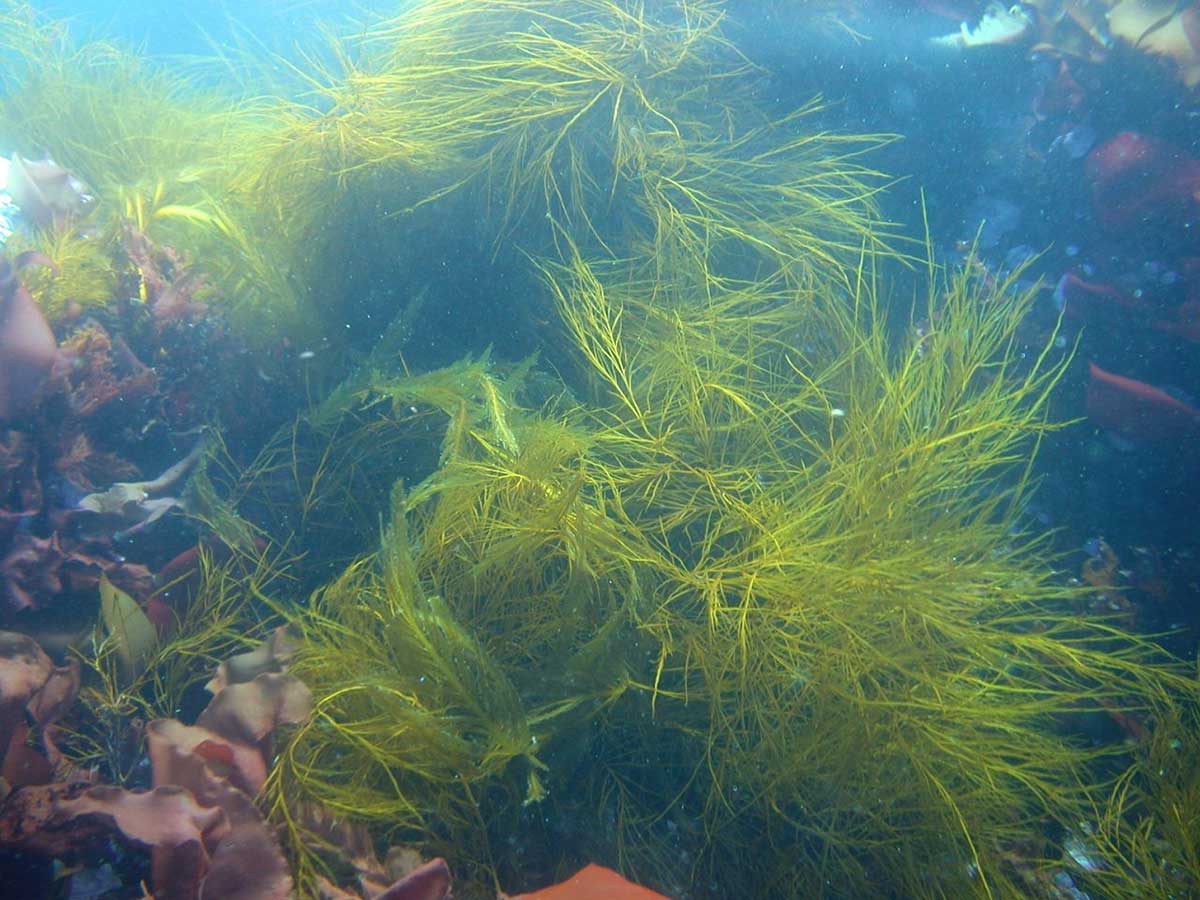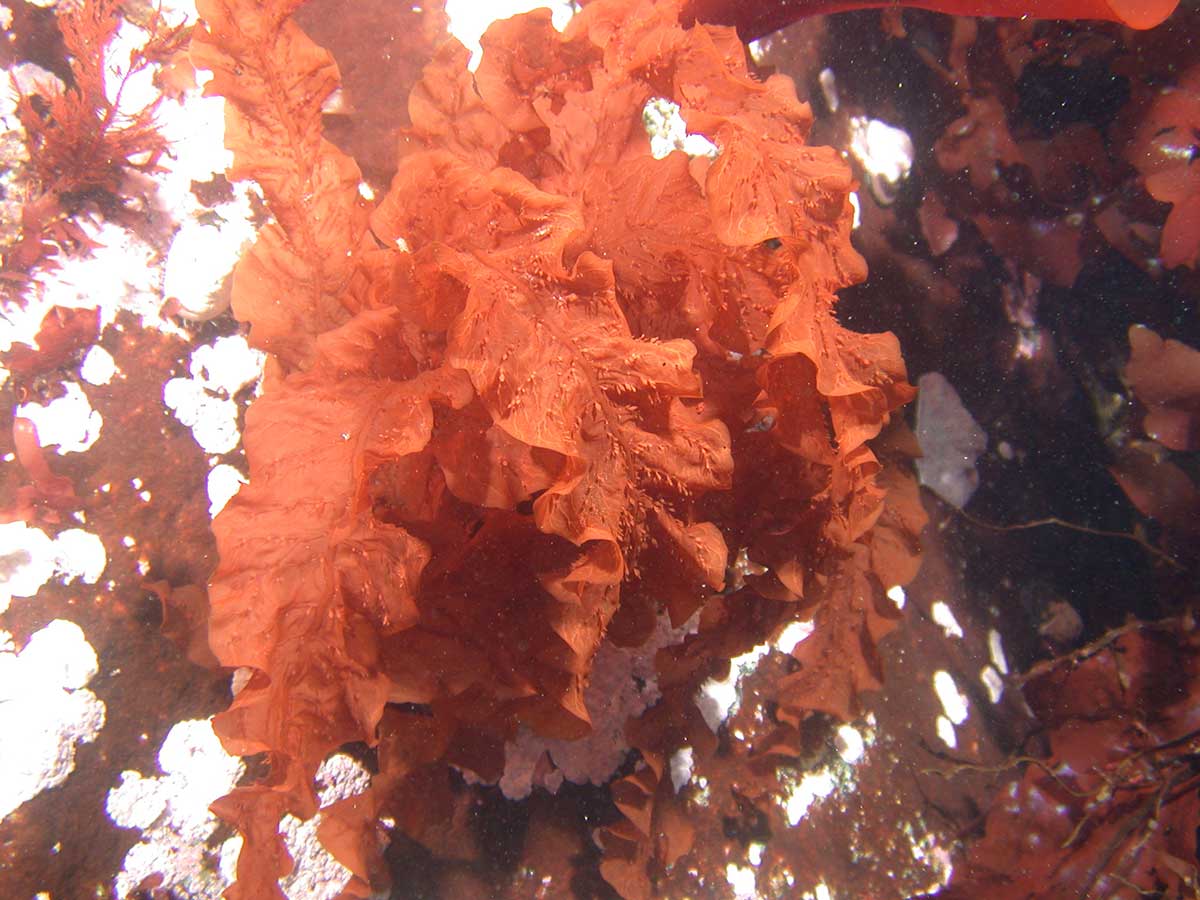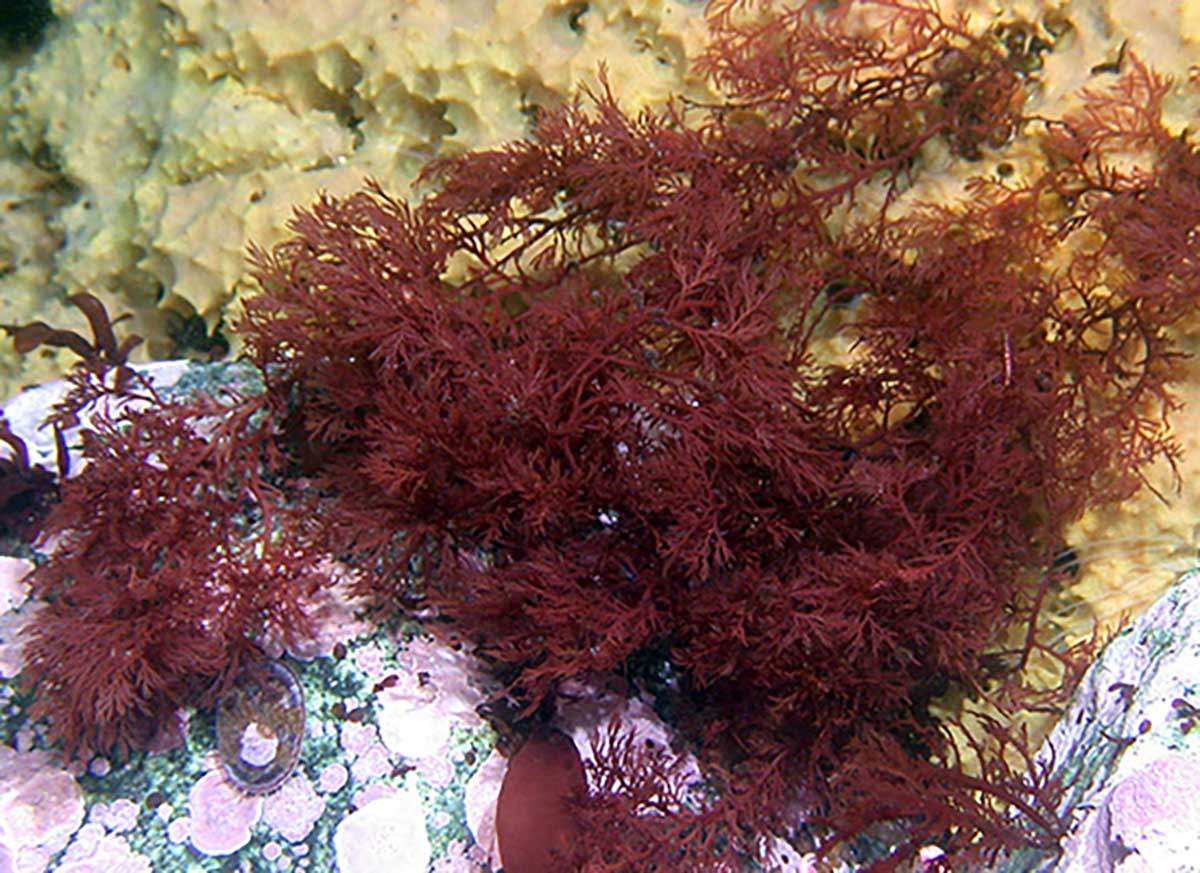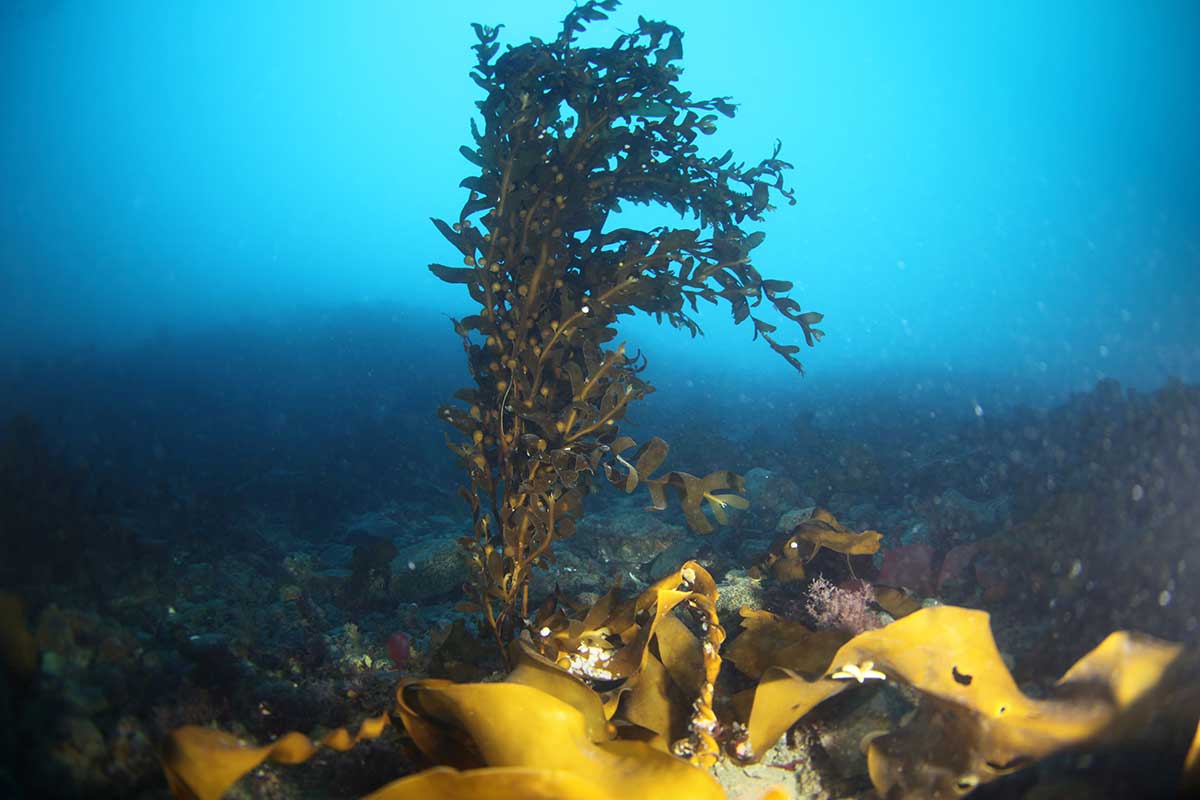 I’ve been spending my last posts talking about diving and am still are not quite yet done with the topic. But I thought that this time I’d talk a bit about what we see on those dives. I might just as well start with what we see most, which are macroalgae (or "seaweeds", which means pretty much the same thing as "macroalgae").
I’ve been spending my last posts talking about diving and am still are not quite yet done with the topic. But I thought that this time I’d talk a bit about what we see on those dives. I might just as well start with what we see most, which are macroalgae (or "seaweeds", which means pretty much the same thing as "macroalgae").
The macroalgae are a natural thing for me to talk about anyway. Although my students and I also study marine animals, most of my formal background is in the study of algae and the macroalgae are certainly my first love (academically speaking). 8^)
Phycology is the study of algae and more than anything else I think of myself as a phycologist. Phycos is the Greek word for algae while the word algae is from Latin. The suffix -olgy is also Greek and the first part of the name for a field of study should come from Greek too. So that is why it is "phycology" even though that word sometimes gets confused with "psychology."
 The part of Antarctica where we are, along the western side of the Antarctic Peninsula, is close to heaven for a phycologist. The benthic (meaning ocean "bottom") communities are dominated by huge macroalgae except in places where the bottom is very silty instead of rocky. In a study I did here in 1989, we found an average biomass of 4.3 kilograms of macroalgae per meter squared on the bottom. That may not mean much to you but another way to put it is 17.1 tones per acre (or about 22.6 tones in the area of a football field if I did the math right). That is a lot of algae!
The part of Antarctica where we are, along the western side of the Antarctic Peninsula, is close to heaven for a phycologist. The benthic (meaning ocean "bottom") communities are dominated by huge macroalgae except in places where the bottom is very silty instead of rocky. In a study I did here in 1989, we found an average biomass of 4.3 kilograms of macroalgae per meter squared on the bottom. That may not mean much to you but another way to put it is 17.1 tones per acre (or about 22.6 tones in the area of a football field if I did the math right). That is a lot of algae!
Macroalgae come color coded: green, brown, and red. The colors come from pigments that the plants use to capture light for photosynthesis. All photosynthetic plants have a pigment called chlorophyll a. That is what makes the plants you are used to seeing on land green. Essentially all plants have other pigments that help and they can make the plants have different colors.
 Most of the time we are here there is only one species of green macroalgae at Palmer that lives completely submerged all the time (that is, subtidal) although there are several species that grow in the intertidal (the part of the shore covered at high tide but exposed at low tide). The subtidal is dominated by huge brown macroalgae and, although not as plentiful in terms of biomass, there are many species of red macroalgae too. All the photographs on this post are photos of brown and red macroalgae taken by my friend and colleague, Bill Baker.
Most of the time we are here there is only one species of green macroalgae at Palmer that lives completely submerged all the time (that is, subtidal) although there are several species that grow in the intertidal (the part of the shore covered at high tide but exposed at low tide). The subtidal is dominated by huge brown macroalgae and, although not as plentiful in terms of biomass, there are many species of red macroalgae too. All the photographs on this post are photos of brown and red macroalgae taken by my friend and colleague, Bill Baker.
Don’t ever let anyone tell you that there no forests in Antarctica. As I often say when I’m giving talks, there are indeed forests, but they are forests of brown macroalgae. Some species can cover 100% of the bottom in some places and rise a meter or more (3-4 feet) up. Another huge, flat species can spread out across the bottom for over 50 feet and be 3 or 4 feet across. Those too can cover 100% of the bottom in some places. And in deeper water, there is a species that has floats and can rise up 6 to 7 feet off the bottom. That’s the one in the photo directly below, Cystosphaera jacquinotii. The the lighter brown, spherical structures are gas filled floats that allow it to float up so high. The individual in the photo is probably only about four feet high, but bigger than that is very common. Very impressive organisms!
 Quite some years ago, National Geographic took some of my amateur underwater video along with some professionally shot interview footage provided by the UAB Media Relations department and turned it into a very short documentary video. It shows not only the underwater macroalgal forests, but also deeper communities dominated by invertebrates. You can view it at https://www.nationalgeographic.com/science/article/100323-antarctica-algae-forest-video.
Quite some years ago, National Geographic took some of my amateur underwater video along with some professionally shot interview footage provided by the UAB Media Relations department and turned it into a very short documentary video. It shows not only the underwater macroalgal forests, but also deeper communities dominated by invertebrates. You can view it at https://www.nationalgeographic.com/science/article/100323-antarctica-algae-forest-video.
For a version of our UAB in Antarctica website even longer ago, I put more of my amateur video under the title The Forests of Antarctica on our project’s YouTube channel. Sorry for the hokey narration.